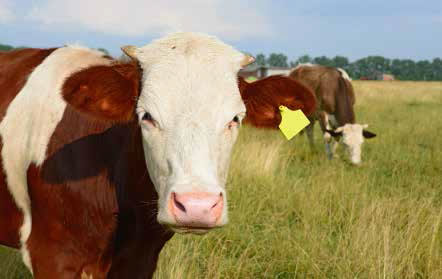Rural economies’ obstacles, solutions examined
Rural economies’ obstacles, solutions examined JoyAhead of the launch of the Operation Phakisa on Agriculture, Land Reform and Rural Development in February 161 people worked in labs to understand the obstacles and solutions to greater inclusivity for rural economies, and growth in the agricultural sector. President Zuma explained this at the launch.
 The President said the deliberations of the lab participants were organised according to seven work streams: land reform; producer support; livestock; grains; horticulture; labour, and rural development.
The President said the deliberations of the lab participants were organised according to seven work streams: land reform; producer support; livestock; grains; horticulture; labour, and rural development.
Insights flow from work streams
“The land reform work stream, for instance, has identified the establishment of District Land Reform Delivery Centres; fast tracking of the settlement of outstanding restitution claims; promoting and protecting the rights of persons living under insecure tenure; and accelerating land development and redistribution as key priorities,” said the President.
Commodity work streams
The three commodity-based work streams, namely grains, livestock and horticulture, focused their initiatives on expanding the potential for trade in domestic and export markets, developing and strengthening value chains, sharpening research and innovation systems, and making the most of water resources.
“The horticulture work stream, for example, developed three initiatives, one of which is called trade promotion, retention and optimisation. This initiative aims to increase South Africa’s horticultural trade potential from an estimated R54 billion in 2015 to R90 billion by 2030,”announced President Zuma.
The livestock work stream examined the need for a national livestock census, and animal identification and traceability system. “They are looking at the need to strengthen meat exports, improve disease control mechanisms and ultimately ensure adherence to international trade protocols,” said the President.
The grain work stream developed a programme called Unlocking Finance for Grains through Private Public Partnerships. Its goal is to address the limited impact that grant-based financial models have on growth in the grain industry. “It seeks to use grant funding as collateral to unlock much needed financial support from development finance institutions and commercial banks,” explained President Zuma.
“This initiative will link farmers to buyers and processors of grain using contractual innovations which mitigate the risks for both parties. The estimated impact is an added 507 000 hectares under production, in turn creating about 53 000 new jobs.”
Land reform work stream
Land reform and various kinds of agricultural development must contribute to a more inclusive and vibrant rural economy.
President Zuma said the Rural Development work stream identified Strategic Leadership and Coordination for Structural Transformation; Augmentation of Existing Essential Basic Service Roll-out Programmes; and Rural Enterprise Development as key initiatives.
“The slow delivery of rural transformation due to ineffective coordination, planning, execution and implementation has kept rural households trapped within the triple challenges of poverty, inequality and unemployment.”
The Strategic Leadership and Coordination for Structural Transformation initiative should address the fragmentation of rural development budgets and programmes.
President Zuma said establishing an agency at national level to mobilise, coordinate and manage resources; finance rural development projects; and coach and train participating cooperatives in business and managerial skills has been proposed.
“The next step is to seek public private partnerships with business, organised labour and civil society. In July 2017 the main stakeholders in the sector will sign agreements committing themselves to the implementation of these initiatives,” announced the President.